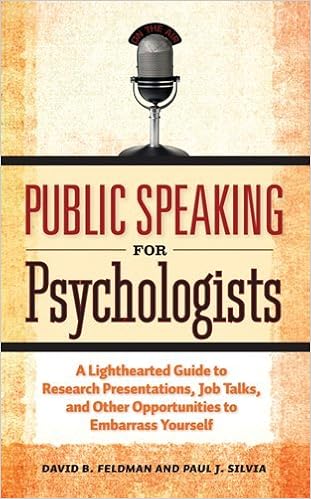You need to be who you are in life
July 30, 2018Now you’re on your way
January 20, 2019One thing I’ve learned about doing presentations over the years is that it’s okay to make mistakes – because I can learn from them. Each new presentation gives me a fresh opportunity to fix some mistakes I made in previous presentations, and then I’ll usually make some new mistakes I never even saw coming.
In this podcast, I’ll share with you 5 tweaks that I think can help improve any presentation. They’re based on my own experience and some other tips I picked-up in a helpful little book that I’ll tell you about at the end.
The first tweak is Respect. R-E-S-P-E-C-T. Respect for you as a presenter, respect for your audience, and respect for your material.
Every presenter deserves a good introduction. The last thing you want is for your well-intentioned host to mispronounce your name or introduce you with some ad lib comments on the spot that might lack focus. At the very least you want to let your audience know why they should listen to you. For this reason, I think it’s helpful to write your own introduction to give to your host to read. In some cases, it might be helpful to list your academic credentials, but I think audiences are more interested in hearing a little bit about your passion for your topic and what they can expect to learn from your experience.
Next consider your audience. Respect their point of view. Imagine someone saying this to you before your next presentation: “I’ll sit quietly, listen politely, and keep my snarky comments to myself, provided that you don’t insult my intelligence or talk too long. My time is short, my caffeine addiction is strong, and my bladder is small.” Woe unto the speaker who violates this contract. That advice comes from the book I’ll tell you about shortly.
And finally, respect your material. At the end of your talk there’s no need to go on an on about how much more you could say if you only had the time. Your audience knows that. Instead, summarize your key points, and let people ask you some questions if they like.
The second tweak is to Prepare. Some people think that they can get away with improvising their talk or reading their notes. And sometimes they can. But I prefer to rehearse my talks as much as possible so that I sound like I’m being spontaneous. I don’t mean memorizing all my points. But I do think it’s helpful to plan and memorize a good strong opening that will hopefully grab my audience’s attention. Then it’s helpful to keep slides short and simple so that I can talk to the key points I want to make without losing focus or getting lost in extra details.
The third tweak is to Curb Anxiety. Don’t apologize for being nervous. Everyone gets nervous. I suppose some presenters do apologize as a way to get the audience on their side. But remember that the audience is already on your side. They want a good presentation just as much as you do. And if you start talking about how nervous you are, you’ll probably make your audience nervous too. Reject your negative self-talk. Finally, develop some creative strategies to affirm yourself. Let me tell you something. Pretty much before every talk I give, I arrive early to scope out the room. I stand or sit in different spots around the room, and I imagine myself at the front giving my talk, talking to me, my most appreciative listener. Maybe that sounds kind of weird to you, but, as a high introvert, it works for me.
The fourth tweak is to Tell a Story. In most situations I think it’s probably best to avoid jargon, abstractions and statistics, and to provide some concrete examples instead. Tell an engaging story that will leave your audience with a take-away message. What’s the one thing you want your audience to understand about your topic and remember?
And the fifth tweak is to Respond Graciously to Questions. End your talk by saying something simple like this, “Thanks. Can I answer any questions?” Instead of feeling worried and defensive about answering various random questions that might come flying at you, remember that most questions from the audience are usually pretty basic, and that you can answer them by repeating key points you want to make from your presentation. At the end of a presentation I did recently about creative approaches to the kind of work I do, one person asked me, “So, what do you do?” This was the perfect opportunity for me to repeat my key points.
What if there are no questions? I’ve heard some presenters challenge their audience by saying something like, “C’mon! there must be at least one question out there!” But I’ve heard other better presenters get a conversation going by saying, “Sometimes people ask me this” and then they supply their own question. But if you’re running out of time, it’s best just to say, “Thank You” and to sit down.
You can read more about these and other helpful tips in a book by David Feldman and Paul Silvia, called Public Speaking for Psychologists: A lighthearted guide to research presentations, job talks, and other opportunities to embarrass yourself. It’s short, fun to read, and I found it very helpful.
I hope the 5 tweaks I talked about in this podcast are helpful to you. Remember, as a presenter, you’re going to make mistakes. We all do. But you can learn from them. Have fun with your next presentation and let me know how it goes. You can reach me at robertmundle.com.
Thanks for listening!
![]()
![]()
![]()
Robert Mundle, MDiv, STM, ThM
- Registered Psychotherapist
- Spiritual Health Practitioner
Here’s the link to the book I mentioned – Public Speaking for Psychologists
http://www.apa.org/pubs/books/4313026.aspx


